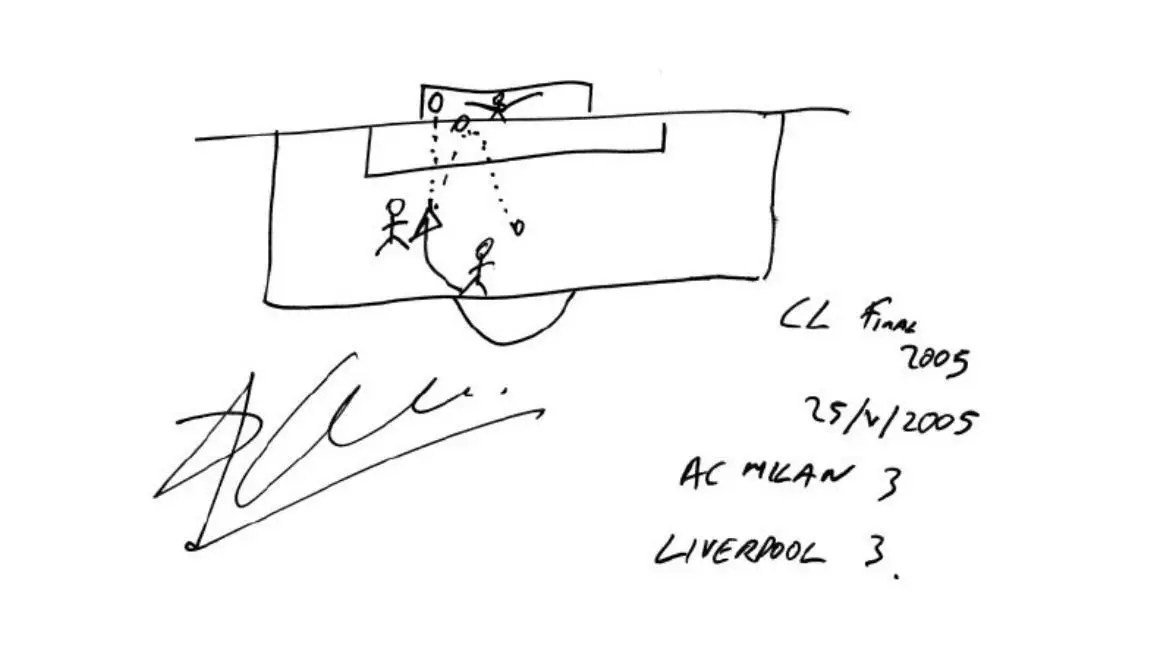When considering the essence of football, the exhilaration of scoring transcends mere statistics and tactical prowess. It embodies an art form that encapsulates emotion, strategy, and history. Each goal tells a story, leaving an indelible mark on the hearts of players and fans alike. This sentiment is beautifully captured in Javier Cáceres’s project, where he has dedicated years to collecting illustrations of legendary goals from some of the sport’s most revered figures. The culmination of this journey is encapsulated in his book, “Tore Wie Gemalt” (“Goals as Portraits”), which explores the intersection of art, memory, and the beautiful game’s greatest moments.
The genesis of Cáceres’s unique endeavor can be traced back to an encounter with former Chilean international Leonel Sánchez in 2005. During discussions about a specific goal from the 1962 World Cup, Sánchez, unable to articulate the event’s intricate details verbally, opted instead to sketch it out. This moment served as a catalyst for Cáceres, demonstrating how visual representation could resurrect and enrich the narrative around historical football moments. It was a revelation: rather than just recounting a goal, players could embody their legacy through their drawings, an experience that would forge deeper connections between them and the stories they shared.
With every sketch, the conversation took a new direction, creating a more profound dialogue about the intricacies of their footballing journeys. This approach not only elicited fond memories but also highlighted the often-overlooked contexts surrounding each goal. This dynamic exchange also turned a conventional interview into an intimate storytelling session, making Cáceres’s work a significant reflection on how players perceive their own contributions to the sport’s fabric.
Cáceres’s portfolio brims with contributions from football icons spanning decades, including Pelé, Franz Beckenbauer, and Bobby Charlton, alongside newer talents like Kai Havertz. Each illustration is signed, transforming the sketches into personal mementos that celebrate historic moments. One particularly evocative entry is Jorge Valdano’s depiction of a spectacular goal assisted by Diego Maradona during the 1986 World Cup final. Valdano’s detailed narrative breathes life into the artistic representation, emphasizing that each goal is not just a point on a scoreboard but a saga in itself.
In a similar vein, Pep Guardiola’s sketch is notable for its technical precision—reflecting the meticulous nature of a coach who appreciates the game down to its finest details. Despite his reputation as a strategist rather than a scorer, Guardiola’s representation showcases the profound respect he holds for every aspect of football, echoing the sentiments of a player whose efforts, however understated, are part of a grander narrative.
The artistic interpretations differ significantly among players. Xavi Hernández’s sketch, for example, opt to use stick figures amidst chaotic lines, which captures the essence of movement and fluidity associated with his playing style. This contrasts with Guardiola’s more controlled and technical representation, offering a window into how the same moment can be perceived through various lenses. Such variations underscore the personalities and philosophies inherent in each player’s approach to the game.
Cáceres’s book harmonizes these differences, presenting a multifaceted view of football that goes beyond the surface—exploring the emotional undercurrents tied to each goal and the creative expressions players use to convey their experiences.
The collection is not merely a nostalgic catalogue, but a testament to football’s evolving narrative over the years. Goals from crucial Champions League finals dominate the windows into this history. Xabi Alonso’s recollection of his equalizing penalty in the 2005 final stands as a moment of resilience and determination, illuminating the psychological stakes typical in such high-pressure scenarios.
Similarly, Kai Havertz’s goal during Chelsea’s triumphant 2021 campaign marks a contemporary milestone, representing the hope and dreams of a new generation. These histories, inscribed through sketches, weave an intricate tapestry of aspiration and memory, capturing why football remains so resonant globally.
Despite the remarkable array of stars represented, certain figures remain notably absent. The notorious challenges of capturing illustrations from legends like Diego Maradona underscore the fleeting nature of opportunity in the world of sports. Cáceres recounts his near encounters with Maradona, emphasizing the chaotic charm that characterized the late football icon’s life. These anecdotes add a layer of poignancy to the endeavor, reminding us that while legends may leave an enduring legacy, the moments to connect and capture that legacy can be just as elusive.
Javier Cáceres’s “Tore Wie Gemalt” transforms the art of football into an exploration of identity, memory, and expression. Through sketches, the essence of scoring goals transcends time, allowing players to revisit their greatest moments and share the stories hidden within the game. Ultimately, this collection symbolizes not just goals scored but lives lived—the artistry behind every strike, every cheer, and every glorious moment on the pitch.


Leave a Reply